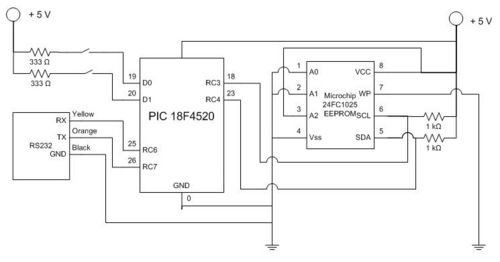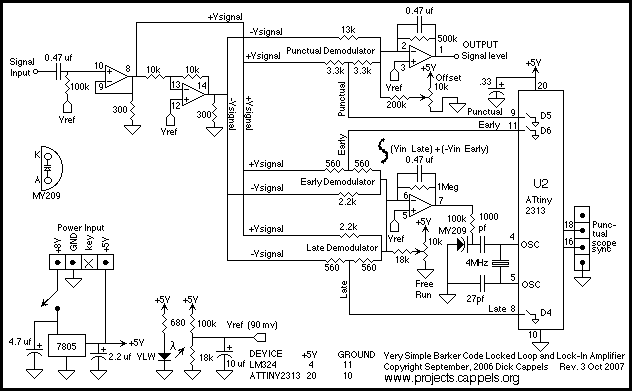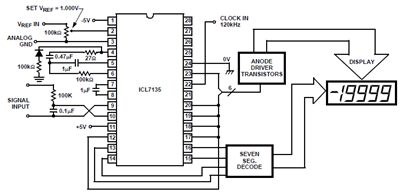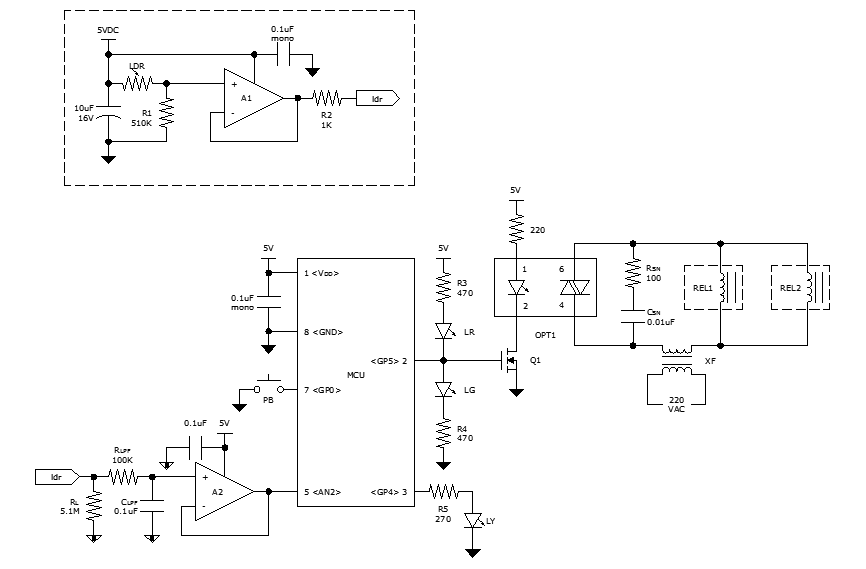
Data Based IQ Modulator
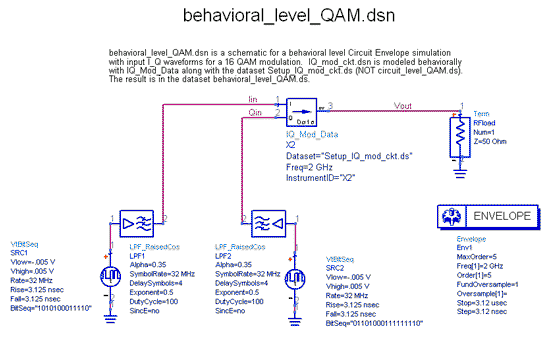
The IQ_Mod project demonstrates the use of the IQ_Mod_Setup and IQ_Mod_Data components in Advanced Design System (ADS). These components are part of the ADS behavioral model suite located within the System - Data Models palette. The schematic "IQ_mod_ckt.dsn" represents the modulator of interest, which is a modified version of the previously constructed circuit-level modulator. The primary distinction is the exclusion of the amplifier from the design. The modulator comprises the sub-circuits "MixerGilCel.dsn," "phase_shift.dsn," and "Wilkinson.dsn." The schematic "circuit_level_ramp.dsn" provides a circuit-level simulation of "IQ_mod_ckt.dsn," featuring I_Q waveforms with time-varying amplitude, with results stored in the dataset "circuit_level_ramp.ds." Similarly, "behavioral_level_ramp.dsn" offers a behavioral-level simulation of the same modulator, also with time-varying I_Q waveforms, and results are stored in "behavioral_level_ramp.ds." The schematic "circuit_level_QAM.dsn" details a circuit-level simulation of "IQ_mod_ckt.dsn" for 16 QAM modulation, with results in "circuit_level_QAM.ds." The "behavioral_level_QAM.dsn" schematic presents a behavioral-level simulation for 16 QAM modulation, with results stored in "behavioral_level_QAM.ds." Figures 1 and 2 illustrate comparisons of circuit and behavioral level results for Circuit Envelope simulations, demonstrating accurate modeling of both input and output waveforms, as well as strong agreement in the input and output IQ trajectories.
The IQ_Mod project is centered around advanced modulation techniques utilizing the IQ_Mod_Setup and IQ_Mod_Data components within ADS. This project integrates several critical sub-circuits to form a comprehensive modulator design. The exclusion of the amplifier from the modulator circuit signifies a shift towards a more simplified architecture, potentially enhancing efficiency and reducing complexity in signal processing.
The sub-circuits involved include "MixerGilCel.dsn," which typically serves as the mixer stage, facilitating the combination of signals at different frequencies. The "phase_shift.dsn" sub-circuit is essential for adjusting the phase of the signals to achieve the desired modulation characteristics. The "Wilkinson.dsn" circuit often functions as a power divider or combiner, ensuring that the signals are appropriately managed throughout the modulation process.
The project encompasses multiple simulation approaches, including both circuit-level and behavioral-level analyses. The circuit-level simulations, as represented in "circuit_level_ramp.dsn" and "circuit_level_QAM.dsn," focus on the physical implementation of the modulator, allowing for detailed examination of the circuit's performance under realistic conditions. These simulations generate datasets that provide insight into the modulator's behavior, particularly in terms of amplitude variations in the I_Q waveforms.
On the other hand, the behavioral-level simulations, represented in "behavioral_level_ramp.dsn" and "behavioral_level_QAM.dsn," abstract the physical components and focus on the overall performance and characteristics of the modulation scheme. This approach enables faster simulations and can be particularly useful in the early stages of design when exploring various modulation strategies and their effects on signal integrity.
The comparison figures serve to validate the accuracy of the models employed in both simulation approaches. By juxtaposing the circuit-level and behavioral-level results, it is possible to assess how closely the models align with expected performance metrics. The strong agreement observed in the IQ trajectories and waveforms underscores the reliability of the modeling techniques applied in this project, providing confidence in the design's effectiveness for practical applications in communication systems.The IQ_Mod project illustrates the use of the IQ_Mod_Setup and IQ_Mod_Data components in ADS. These components are part of the ADS behavioral model suite found under the System - Data Models palette. "IQ_mod_ckt. dsn" is a schematic for the modulator of interest. This modulator is a modification of the circuit-level modulator constructed. The biggest difference is the removal of the amplifier ["PA_2stg. dsn"]. The modulator is constructed of the sub-circuits "MixerGilCel. dsn", "phase_shift. dsn", and "Wilkinson. dsn". "circuit_level_ramp. dsn" is a schematic for a circuit level Circuit Envelope simulation of "IQ_mod_ckt. dsn" with I_Q waveforms that have time-varying amplitude. The result is in the dataset "circuit_level_ramp. ds". "behavioral_level_ramp. dsn" is a schematic for a behavioral level Circuit Envelope simulation with I_Q waveforms that have time-varying amplitude. "IQ_mod_ckt. dsn" is modeled behaviorally with IQ_Mod_Data along with the dataset "Setup_IQ_mod_ckt. ds". The result is in the dataset "behavioral_level_ramp. ds". "circuit_level_QAM. dsn" is a schematic for a circuit level Circuit Envelope simulation of "IQ_mod_ckt. dsn" with I_Q waveforms for a 16 QAM modulation. The result is in the dataset "circuit_level_QAM. ds". "behavioral_level_QAM. dsn" is a schematic for a behavioral level Circuit Envelope simulation of with I_Q waveforms for a 16 QAM modulation.
"IQ_mod_ckt. dsn" is modeled behaviorally with IQ_Mod_Data along with the dataset "Setup_IQ_mod_ckt. ds". The result is in the dataset "behavioral_level_QAM. ds". In Figure 1, a comparison of circuit and behavioral level results is given for Circuit Envelope simulation. Both input and output waveforms are modeled accurately. In Figure 2, a comparison of circuit and behavioral level results is given for Circuit Envelope simulation.
Strong agreement is shown for both the input and output IQ-trajectories. 🔗 External reference
The IQ_Mod project is centered around advanced modulation techniques utilizing the IQ_Mod_Setup and IQ_Mod_Data components within ADS. This project integrates several critical sub-circuits to form a comprehensive modulator design. The exclusion of the amplifier from the modulator circuit signifies a shift towards a more simplified architecture, potentially enhancing efficiency and reducing complexity in signal processing.
The sub-circuits involved include "MixerGilCel.dsn," which typically serves as the mixer stage, facilitating the combination of signals at different frequencies. The "phase_shift.dsn" sub-circuit is essential for adjusting the phase of the signals to achieve the desired modulation characteristics. The "Wilkinson.dsn" circuit often functions as a power divider or combiner, ensuring that the signals are appropriately managed throughout the modulation process.
The project encompasses multiple simulation approaches, including both circuit-level and behavioral-level analyses. The circuit-level simulations, as represented in "circuit_level_ramp.dsn" and "circuit_level_QAM.dsn," focus on the physical implementation of the modulator, allowing for detailed examination of the circuit's performance under realistic conditions. These simulations generate datasets that provide insight into the modulator's behavior, particularly in terms of amplitude variations in the I_Q waveforms.
On the other hand, the behavioral-level simulations, represented in "behavioral_level_ramp.dsn" and "behavioral_level_QAM.dsn," abstract the physical components and focus on the overall performance and characteristics of the modulation scheme. This approach enables faster simulations and can be particularly useful in the early stages of design when exploring various modulation strategies and their effects on signal integrity.
The comparison figures serve to validate the accuracy of the models employed in both simulation approaches. By juxtaposing the circuit-level and behavioral-level results, it is possible to assess how closely the models align with expected performance metrics. The strong agreement observed in the IQ trajectories and waveforms underscores the reliability of the modeling techniques applied in this project, providing confidence in the design's effectiveness for practical applications in communication systems.The IQ_Mod project illustrates the use of the IQ_Mod_Setup and IQ_Mod_Data components in ADS. These components are part of the ADS behavioral model suite found under the System - Data Models palette. "IQ_mod_ckt. dsn" is a schematic for the modulator of interest. This modulator is a modification of the circuit-level modulator constructed. The biggest difference is the removal of the amplifier ["PA_2stg. dsn"]. The modulator is constructed of the sub-circuits "MixerGilCel. dsn", "phase_shift. dsn", and "Wilkinson. dsn". "circuit_level_ramp. dsn" is a schematic for a circuit level Circuit Envelope simulation of "IQ_mod_ckt. dsn" with I_Q waveforms that have time-varying amplitude. The result is in the dataset "circuit_level_ramp. ds". "behavioral_level_ramp. dsn" is a schematic for a behavioral level Circuit Envelope simulation with I_Q waveforms that have time-varying amplitude. "IQ_mod_ckt. dsn" is modeled behaviorally with IQ_Mod_Data along with the dataset "Setup_IQ_mod_ckt. ds". The result is in the dataset "behavioral_level_ramp. ds". "circuit_level_QAM. dsn" is a schematic for a circuit level Circuit Envelope simulation of "IQ_mod_ckt. dsn" with I_Q waveforms for a 16 QAM modulation. The result is in the dataset "circuit_level_QAM. ds". "behavioral_level_QAM. dsn" is a schematic for a behavioral level Circuit Envelope simulation of with I_Q waveforms for a 16 QAM modulation.
"IQ_mod_ckt. dsn" is modeled behaviorally with IQ_Mod_Data along with the dataset "Setup_IQ_mod_ckt. ds". The result is in the dataset "behavioral_level_QAM. ds". In Figure 1, a comparison of circuit and behavioral level results is given for Circuit Envelope simulation. Both input and output waveforms are modeled accurately. In Figure 2, a comparison of circuit and behavioral level results is given for Circuit Envelope simulation.
Strong agreement is shown for both the input and output IQ-trajectories. 🔗 External reference

